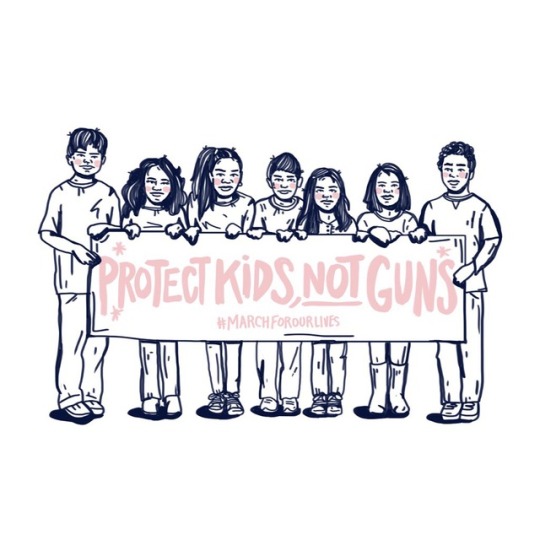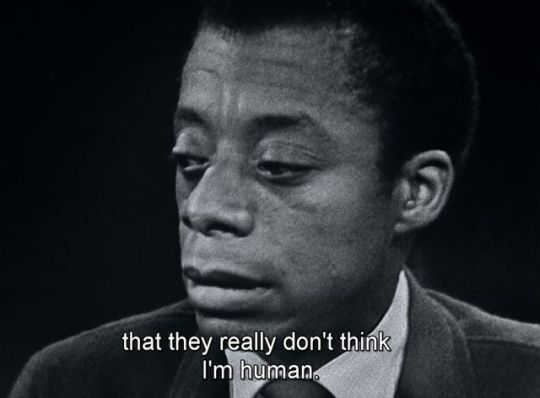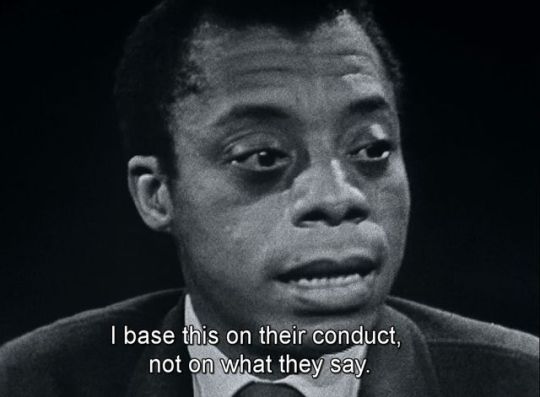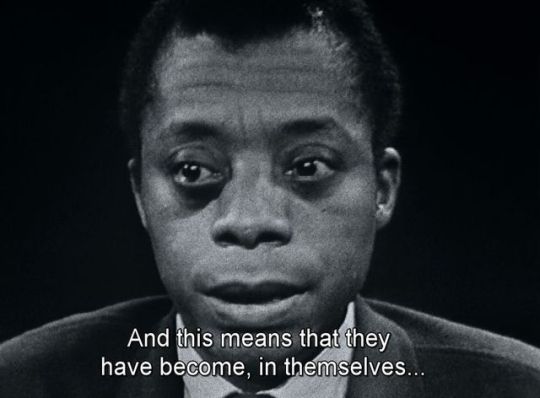My name is Caitlin Pettit. I am a Media & Communications student. This blog is an exploration of social media and its impact on individuals and society as part of the #MDA20009 - Digital Communities unit.
Don't wanna be here? Send us removal request.
Text
THE GREAT (FIRE)WALL OF CHINA
Planning on visiting China and documenting your trip on the gram? Lol. Good luck with that.
Picture this: an online world with no Facebook, no Google, no Twitter, and no YouTube. This is the reality for Internet users in China. The Chinese government has been reinforcing an Internet firewall (the Golden Shield Project) since December 2012 as a means to neutralise critical opinions online and prevent corruption. Despite this, China averaged 616.5 million social media users in 2018, the largest social media usage in the world. Chinese Internet users have an array of alternatives to these platforms: Baidu provides an alternative to Google, Weibo for Twitter, RenRen for Facebook and Youku for YouTube. Without the global giants of Facebook and Google to monopolise the market, Chinese social media businesses have an opportunity to thrive. Even with censorship and Internet restrictions, the Chinese people are able to communicate and share their lives within their networks and communities online... to an extent.

This is Google. Baidu. Look familiar?
Content shared online in China is heavily controlled and regulated, and any criticism of China or defiance of the government is immediately deleted. Without the access to outside influences and opinions, the government has complete control of the information their citizens are exposed to through all of the media channels.
The most amazing thing about the Internet for me, a student living in Australia, has been the ability to communicate with people from various countries around the world and learn about lifestyles and cultures that I may not have had access to otherwise. Through Twitter, I have made friends from Sweden, London, Amsterdam and Hong Kong, just to name a few! I begin to imagine not having access to the platforms of which to do this. I’m not going to pretend media in Australia isn’t regulated or biased, however I am extremely grateful to have the freedom to read and expose myself to all kinds of (potentially controversial) content online.
0 notes
Text
READY, PLAYER ONE?

Disclaimer: I am not a gamer. Unless you count Animal Crossing... or The Sims... or that new Harry Potter game on iPhone. Which I’m assuming you don’t.
The concept of ‘play’ is innately animalistic and an intrinsic part of what makes us human beings. Roger Caillois defines four main types of ‘play’:
agon (competition)
alea (chance)
mimicry (simulation)
ilinx (vertigo)
This theory can be extended to ‘play’ within gaming communities as well as within ‘real life’. We can ‘play’ individually or interactively with other people. ‘Twitch’, a live video streaming platform for gaming, is an example of a decentralised network in which the the concept of playing individually and interactively overlap. Users upload live streams of themselves playing a video game, either solo or multiplayer, and other users can watch and respond to their gameplay. This is an extension of the connectivity within gaming, even when you’re playing by yourself, and operates in a similar way to social media platforms.
Gaming communities themselves are a form of social networking. People connect with others through the avenue of ‘play’; whether it’s via MMORPGs (Massively Multiplayer Online Role-Playing Games) such as Minecraft or Runescape where users work with/against other players and interact with each other or through Facebook games, such as Farmville and Candy Crush where users play alone but can communicate with other players and send items to support their gameplay.
Like any social networking platform, gaming communities have issues with trolling, bullying and discrimination. Gaming is still very much considered a ‘guy thing’, so much so that female gamers are referred to, or even refer to themselves as, ‘Gamer Girls’ to distinguish themselves from the norm. Sexist attitudes and misogyny still hold a lot of value within gaming communities through both the slurs and harassment directed towards women and the startling lack of female characters that users can play as. When Ubisoft’s Assassin’s Creed Unity was criticised for not having ANY female protagonists, their technical director, James Therien’s response was that "female character[s] means that you have to redo a lot of animation, a lot of costume (...) It would have doubled the work on those things.” This spurred the hashtag #WomenAreTooHardToAnimate; a critique of the company’s response. Brianna Wu, a woman employed in the gaming development industry, details the harassment of women in gaming communities through a number of case studies, using the example of an email she’d received from an anonymous source claiming that "Women are the n****** of gender (...) If you killed yourself, I wouldn’t even fuck the corpse." You can read more here. I can’t help but wonder, if these disgusting and ignorant attitudes towards women within the gaming community is what has ultimately compelled me not to game.

REFERENCES
Ballou, E. 2014, Sexism In Gaming Culture: Women Can Be Gamers Too, and Don't You Forget It, Bustle, <https://www.bustle.com/articles/32730-sexism-in-gaming-culture-women-can-be-gamers-too-and-dont-you-forget-it>.
Burns, S. 2014, No female leads in Assassin's Creed Unity 'unfortunate but a reality of game development', VideoGamer, <https://www.videogamer.com/news/no_female_leads_in_assassins_creed_unity_unfortunate_but_a_reality_of_game_development_ubi>.
Wu, B. 2014, No skin thick enough: The daily harassment of women in the game industry, Polygon, <https://www.polygon.com/2014/7/22/5926193/women-gaming-harassment>.
1 note
·
View note
Photo

While writing my most recent blog post I typed #depression into the Tumblr search bar, curious to see the kind of posts I would find. Instead I was met with this popup from Tumblr. It’s so great to see a social media platform encouraging users to seek help and actually offering options for online (and anonymous) counselling and support systems.
0 notes
Text
MENTAL ILNESS, BUT MAKE IT FASHION

TW: This post will be discussing the dangers of the ‘cool’ and ‘cutesy’ depression/anxiety culture on Tumblr and the romanticisation of mental illness. May contain triggering content.
I was an avid Tumblr user in my early teenage years, and cutesy depression and anxiety jokes were the norm on my dashboard. Posts about never leaving your bedroom, distancing yourself from friends and family and feeling empty inside and wanting to die received thousands upon thousands of notes, and misquoted Sylvia Plath poems and romanticised depictions of suicide and death were reblogged on the daily. At the time, I didn’t see the issue with sharing this content, believing that by speaking about mental health in this way it would help to normalise these conditions. There was something almost comforting in seeing posts I could relate to about something that was such a dark and uncomfortable place for me. In hindsight, I am able to see the danger in romanticising depression and anxiety without also providing solutions and/or encouraging people with mental illness to seek help and support. There’s a difference between de-stigmatising mental illness, and normalising it to the point where it becomes a trend to get ‘notes’ and ‘likes’.
Open discussions about mental illness are important, and social media can be a great way to connect with other people who are going through the same struggles as you. Social media “offers a rich and varied cultural field of participatory practice for ordinary people who can benefit from engaging with health issues, information and support outside of health institutions.” (McCosker, 2016). Sharing your experience with mental illness online, even in a lighthearted manner, can be extremely comforting. Jamie Laurne Keils explores this point really well in the photo essay: Depressiongrams, claiming that while “this genre of content feels attention-seeking in a non-productive way (...) with the benefit of hindsight I recognize such cryptic agitations as efforts to generate a personally satisfying sense of plot.”
It is incredibly important to remember the global reach that your words can have on social media, and the way they may affect and influence the people who read them. One of my favourite YouTubers, Lindsey Rem, speaks openly about her anxiety on her Youtube channel and across her social media platforms. She not only talks about her experience with anxiety but also of the stigmas surrounding it and how she combats and attempts to overcome her illness. The comments are full of support from viewers, expressing their gratitude for Lindsey’s use of her platform to speak up on important issues.
youtube
Bad Days & Mental Health Awareness | lindseyrem
It is my opinion that the idealised portrayal of depression, anxiety and other mental illnesses that is often showcased across social media platforms is extremely damaging. Social media can be such a great platform for facilitating discussion and I believe that we would all benefit a lot more from an open and genuine conversation around mental health.
REFERENCES
Keiles, J. L. 2015, 'Depressiongrams: A Photo Essay', Medium, Sep 23
McCosker, A. 2016, 'Digital Mental Health and Visibility: Tagging Depression', in P. Messaris and L. Humphreys, Digital Media: Transformations in Human Communication (2nd ed), Peter Lang.
0 notes
Text
KEEP TWEETING AND CARRY ON
When I hear the term ‘crowd sourcing’ my mind immediately goes to crowdfunding campaigns, and platforms like Kickstarter and Go Fund Me. Crowdfunding may be a large aspect of crowd sourcing, but there is so much more to it than accumulating cash and gathering donations online. Crowd sourcing is, in short, about the broad dissemination of information and the distribution of resources.
Crowd sourcing existed prior to the invention of social media, however there is no denying that social media has globalised the process and expanded its reach exponentially. Social media and mobile technology have “transformed the landscape of emergency management and disaster response by enabling disaster affected citizens to produce real time, local information on critical events.” Through social media, people are able to access direct information about crises from the primary sources affected.
The ABC serves as Australia’s official ‘Emergency Broadcaster’ (Posetti & Lo, 2012). Traditionally, information was shared via ABC radio, however it has expanded to using social media alongside traditional media to crowd source. The ABC utilise social media, primarily Twitter and Facebook, to share information and updates on crises to the public and users share and retweet within their own networks, allowing the information to spread quickly and effectively. Posetti & Lo (2012) claim that “the use of [social] media during the Black Saturday bushfires of '08 – where a staff member used twitter to great effect – helped pave the way to making social media activity a more routine work practice.”
I grew up in the beautiful Adelaide Hills region; an area full of vineyards, amazing scenery... and bushfires. In January, 2015, when I was 18 years old, my mother and sister went to Melbourne for a few weeks while I stayed home alone due to commitments at my summer job. January, 2015, also happened to be the month of the Sampson Flat bushfires: the worst bushfires to impact the Adelaide Hills region since the 1983 Ash Wednesday fires. As someone who doesn’t actively listen to the radio or watch the news on TV, social media was essentially my only way of accessing information about the fires, and the only way I was alerted to the fact that this was occurring. I woke up to texts from friends and family, who’d heard of the fires via social media, and DFES (Department of Fire and Emergency Services) notifications direct to my iPhone. Through social media and technology, I was able to keep on top of the bushfire updates and make an informed decision whether or not to evacuate my home.

Facebook’s ‘Safety Check’ tool
The ‘Safety Check’ feature is a recent addition to Facebook that allows users to ‘check in’ during moments of crisis (such as the ‘Flooding in Adelaide’ example provided above). If you are in the same area as a terror attack, natural disaster, etc. ‘Safety Check’ prompts you to “tell friends you are safe”. It provides a quick and easy way to alert everyone in your network that you are safe without having to directly contact people individually.
Social media has, without a doubt, improved our ability to crowdsource more effectively and reach a wider amount of people. We are able to share and access information about disasters in real time, direct from the people affected.
REFERENCES
Poblet M., García-Cuesta E., Casanovas P. 2014, Crowdsourcing Tools for Disaster Management: A Review of Platforms and Methods. In: Casanovas P., Pagallo U., Palmirani M., Sartor G. (eds) AI Approaches to the Complexity of Legal Systems. Lecture Notes in Computer Science, vol 8929. Springer, Berlin, Heidelberg
Posetti, J. & Lo, P. 2012, 'The Twitterisation of ABCs Emergency & Disaster Communication'
0 notes
Text
TROLL IN THE ONLINE FORUM!
Click here for a fascinating and thought provoking article on ‘trolling’ and bullying in the digital age.


Urban dictionary definition of ‘rick roll’
The anonymity of social media and the ability to easily say whatever you want, whenever you want, with little to no repercussions, has resulted in the birth of the ‘Internet Troll’. Social media sites and online forums, such as Reddit and 4Chan, are full of ‘trolls’; users who use these platforms to ridicule, mock and, in more severe cases, bully and harass other users. ‘Rick-rolling’ is an example of ‘trolling’, albeit a playful and harmless one. But that draws the question:
TROLLING VS BULLYING. WHERE DO WE DRAW THE LINE?
Are trolls annoying? Yes. Are they dangerous? Well... that depends. Swedish psychologist, Dan Olweus, claims that aggression, repetition, and an imbalance in power are the three key components of ‘bullying’. Memes, rick-rolls and playful mockery are highly prevalent in the online world, but when this transcends from harmless fun into bullying, it becomes a very real, and dangerous, issue.
Someone very close to me, let’s call him John for the sake of anonymity, suffered from depression in his teen years and turned to the Internet and online gaming as a source of comfort and solace. He belonged to an online server/public forum, specifically developed to support video gamers suffering from depression. This online community provided a space for users to meet and connect with other gamers and realise that depression is not something you have to face alone. Even though this platform was started with good intentions, once it amassed over four thousand users (with at least 600 users active per day), the ‘trolls’ began to emerge. John applied to be a moderator; a ‘mediator’ position that qualified you to determine whether users were breaking the “no trolling, no harassment” rules. Punishment for ‘trolling’ began with a warning (in which the user was muted from the server for 24 hours), followed by a temporary ban, and then resulted in a permanent ban from the server; a sort of “three strikes, you’re out!” kind of deal. This practice grew stricter as the server grew in popularity and the amount of harassment and inappropriate content, such as pictures of self harm, nudity and gore, began to grow. Soon, moderators began to be accused of bias, and were simply banning users they didn’t like. What began as mediation had turned into censorship. John ended up leaving the server.
The issue of censorship and mediation becomes much more complex when it comes to larger social media platforms. A platform like Twitter, for example, had 330 million monthly users as of January 2018 and up to 500 million tweets per day (OmnicoreAgency.com). Moderating content of this magnitude is far less black and white than on a server of a few thousand users, such as John’s. Twitter allows people to block and report other users as a means of moderating inappropriate content. However, every single time I have reported a tweet that I would personally consider ‘trolling’ or harassment, I’ve received an email from Twitter Support “thanking” me for my concern but insisting that it doesn’t break their Terms of Service. When the platforms themselves aren’t strict with mediating bullying and harassment, users tend to take matters into their own hands and call these users out through quote tweets or replies; sometimes, even turning into the harassers themselves.
REFERENCES
boyd, d. 2014, It’s Complicated: The Social Lives of Networked Teens, Yale University Press
Aslam, S. 2018, Twitter by the Numbers: Stats, Demographics & Fun Facts, Omnicore Agency, viewed 3 May 2018, <https://www.omnicoreagency.com/twitter-statistics/>.
1 note
·
View note
Photo

one kid is worth more than all the guns in the world @marchforourlivesla
52K notes
·
View notes
Text
HOW MANT RTs FOR EQUALITY AND SOCIAL JUSTICE?
I am extremely passionate about activism and social justice and truly believe in social media’s ability to inspire and bring change. I could ramble on about the movements that have educated and inspired me for-freaking-ever. But I will try my best to keep it brief.
Social media is an excellent tool for the progression of 21st century activism and the fight for equality. It can be utilised to organise local rallies via Facebook, quickly and effectively spread information globally via Twitter and Instagram hashtags, and foster a sense of unity and purpose. But, that’s just it. Social media is a tool. Once we begin to define activism as the mere act of ‘liking’ a page on Facebook or retweeting a hashtag from a movement, we begin to stray into ‘slacktivism’: a lazy (or ‘slack’, hence the name) form of activism that provides gratification to the person engaging with it without effecting any real systematic change. The importance of transcending social media and taking the protest into the ‘real world’ cannot be overlooked.
“Social Media must be understood as complementing existing forms of face-to-face gatherings (rather than substituting for them), but also as a vehicle for the creation of new forms of proximity and face-to-face interaction.”
- Gerbaudo (2012)
Viral hashtags and online calls for gun control following mass shootings are not new. I can’t count the amount of times I have logged onto Twitter to see another #PrayFor[Blank] hashtag trending worldwide in response to a tragedy. People take to the Internet to share their grief and anger (and to demonstrate to their social spheres that they are politically engaged). They change their profile pictures in ‘support’ of the victims. They share photos of the candlelit vigils. They tweet about how things like this ‘shouldn’t happen #GunControlNow’. And then they move on to the next one. And the next. And the next. Maybe this is overly pessimistic of me, but it’s almost like it becomes routine. When we’re exposed to so much tragedy so often, we begin to grow apathetic towards it. A terrorist attack has the potential to become just another hashtag.
HOW ARE MOVEMENTS LIKE #MARCHFOROURLIVES AND #BLACKLIVESMATTER DIFFERENT?

#BlackLivesMatter is a movement fighting racism and, in particular, police brutality against black people in the USA. Something that I find particularly fascinating about the #BlackLivesMatter movement is its longevity. Refusing to fade into the background, #BlackLivesMatter has been an ongoing hashtag for the past five years, sparked by the acquittal of George Zimmerman, a neighbourhood watch volunteer who shot and murdered 17 year old Trayvon Martin. The movement has a heavy focus on remembering the names of the victims, using individual hashtags for each murder (e.g. #EricGarner, #ICantBreathe), and holding their murderers accountable. It calls out the deeply rooted systemic racism in America and fights for change. The Ferguson rallies in 2014 are an excellent example of the movement transcending social media and taking the fight to the streets. You can read more on the history of the movement here.
#MarchForOurLives is a very recent demonstration of a movement that has surpassed the confines of social media. After the mass shooting at Marjory Stoneman Douglas High School in Parkville, FL, a group of teenagers took to Twitter to speak of their experiences and highlight the importance of the fight for gun control. The teenagers reached millions globally with their tweets getting up to 300 thousand favourites and 100 thousand retweets. Emma Gonzalez, one of the spearheads of the movement, has amassed 1.56m Twitter followers in the space of a month. Social media provided the platform for people to voice their opinions and beliefs and granted a group of teenagers, who aren’t even legally old enough to vote, the power to foster change. Even celebrities are getting involved; tweeting the hashtag #NeverAgain and sharing photos of themselves attending the #MarchForOurLives march.

There are three main perspectives on activism in the digital age: the optimists, the pessimists, and the persistents. I like to think of myself as a persistent. While I can see the downfalls of digital activism and its facilitation of apathy, I am also aware of its ability to give people a voice to bring change. It’s about being persistent in your activism and not letting important causes fade into the background.
REFERENCES
Gerbaudo, P. 2012, Tweets and the Streets: Social Media and Contemporary Activism, Pluto Press, London
0 notes
Photo








I Am Not Your Negro (Raoul Peck, 2016)
122K notes
·
View notes
Photo

A young woman proudly protests in front of the capital with a sign reading “#NEVERAGAIN” – a hashtag that has been flooding social media platforms following the Marjory Stoneman Douglas High School Shooting on February 14th. Hashtags help flag attention, become mantras for movements, and help frame the identities and emotions of social movements.
- John
227 notes
·
View notes
Photo

When you share photos from the march tomorrow, make sure to use the hashtag #MarchForOurLives so we can show everyone what the power of the people looks like. 💪
It’s not too late to sign up to march: Text MARCH to 644-33 to find an event near you.
915 notes
·
View notes
Video
youtube
HILLARY CLINTON “JUST CHILLIN’” ON VINE
The lead up to the 2016 US Election was an odd contest of Internet ‘relatability’, with Hillary Clinton trying to prove she was ‘down’ with the kids and the “Bernie Bros”, and Donald Trump trying to prove he was ‘down’ with the average working class American (despite being a tax evading billionaire).
Politicians. They’re just like us.
0 notes



